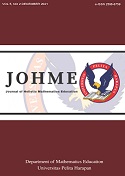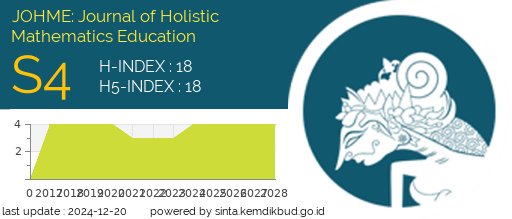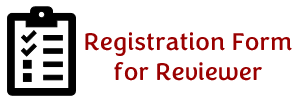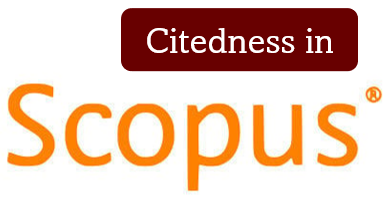MATHEMATICS IN THE NURSING PROFESSION: STUDENT AND PROFESSIONAL NURSES' PERSPECTIVE
DOI:
https://doi.org/10.19166/johme.v5i2.4631Keywords:
dosage calculation, mathematics and nursing, statisticsAbstract
Mathematical knowledge and skill are needed by all students in their studies and future careers. Students’ perceived relevance of mathematics in their future careers influences their attitude towards learning mathematics. This study explored student and professional nurses' perceived relevance and application of mathematics in the nursing profession. A sample size of 301 nursing students in a University in Ghana and 12 professional nurses participated in the study. Data was collected using a questionnaire and interview and was analyzed using descriptive statistics and thematic analysis. The study revealed that both the professional and the student nurses perceived Statistics, Ratio and Rates, and Percentages as the topics in school mathematics that they find most relevant and applicable to their study and practice of nursing. It is recommended that the senior high school mathematics teachers may need to always share the professional applicability of any topic they teach, by using authentic and real-life situations in various professions.
References
Akurugu, B. M. (2010). The attitudes and perceptions of students about the study of english grammar: The case of selected secondary school students in northern region. Retrieved from http://docplayer.net/26865515-The-attitudes-and-perceptions-of-students-about-the-study-of-english-grammar-the-case-of-selected-senior-high-school-students-in-northern-region.html
Anderson, J., & Kriesler, A. (2018). Making maths matter: Engaging students from low socio-economic schools through social justice contexts. Proceedings of the 42nd Conference of the International Group for the Psychology of Mathematics Education, 2, 35-42. Umea, Sweden: PME.
Andrew, S., Salamonson, Y., & Halcomb, E. J. (2009). Nursing students’ confidence in medication calculations predicts math exam performance. Nurse Education Today, 29, 217-223. https://doi.org/10.1016/j.nedt.2008.08.005
Awoniyi, F. C. (2018). Motivation and caning in Ghanaian secondary schools: Evidence from a survey and interviews. Proceedings of the 42nd Conference of the International Group for the Psychology of Mathematics Education, 2, 83-90. Umea, Sweden: PME.
Bagnasco, A., Galaverna, L., Aleo, G., Grugnetti, A. M., Rosa, F., & Sasso, L. (2016). Mathematical calculation skills required for drug administration in undergraduate nursing students to ensure patient safety: A descriptive study. Nurse Education in Practice, 16(1), 33-39. https://doi.org/10.1016/j.nepr.2015.06.006
Boyd, J. L. (2018). How do nurses use math in their jobs? Retrieved from https://work.chron.com/nurses-use-math-jobs-10475.html
Dada, O., & Akpan, S. M. (2019). Discriminant analysis of psycho-social predictors of mathematics achievement of gifted students in Nigeria. Journal for the Education of Gifted Young Scientists, 7(3), 581-594. https://doi.org/10.17478/jegys.605981
Dilles, T., Vander Stichele, R. H., Van Bortel, L., & Elseviers, M. M. (2011). Nursing students’ pharmacological knowledge and calculation skills: Read for practice? Nurse Education Today, 31(5), 499-505. https://doi.org/10.1016/j.nedt.2010.08.009.
Etikan, I., Alkassim, R., & Abubakar, S. (2016). Comparison of snowball sampling and sequential sampling technique. Biometrics & Biostatistics International Journal, 1(3), 6-7. https://doi.org/10.15406/bbij.2016.03.00055
Flegg, J., Mallet, D. G., & Lupton, M. (2012). Students’ perceptions of the relevance of mathematics in engineering. International Journal of Mathematical Education in Science and Technology, 43(6), 717-732. https://doi.org/10.1080/0020739X.2011.644333
Galligan, L., Frederiks, A., Wandel, A. P., Robinson, C., Abdulla, S., & Hussain, Z. (2017). Nursing students’ readiness for the numeracy needs of their program: Students’ perspective. Adults Learning Mathematics: An International Journal, 12(1), 27-38. Retrieved from https://eric.ed.gov/?id=EJ1159198
Gebremichael, A. T. (2014). Students’ perceptions about the relevance of mathematics to other school subjects. European Journal of Science and Mathematics Education, 2(2A), 70-78. https://doi.org/10.30935/scimath/9628
Guy, G. M., Cornick, J., & Beckford, I. (2015). More than math: On the affective domain in developmental mathematics. International Journal for the Scholarship of Teaching and Learning, 9(2). https://doi.org/10.20429/ijsotl.2015.090207
Heinze, A., Reiss, K., & Franziska, R. (2005). Mathematics achievement and interest in mathematics from a differential perspective. ZDM, 37(3), 212-220. https://doi.org/10.1007/s11858-005-0011-7
Hoyles, C., Noss, R., & Pozzi, S. (2001). Proportional reasoning in nursing practice. Journal for Research in Mathematics Education, 22(1), 4-27. https://doi.org/10.2307/749619
Ikeda, T. (2018). Evaluating student perceptions of the roles of mathematics in society following an experimental teaching program. ZDM, 50(2), 259-271. http://dx.doi.org/10.1007/s11858-018-0927-3
Kyllonen, P. C. (2018). Inequality, education, workforce preparedness, and complex problem solving. Journal of Intelligence, 6(3), 33-49. https://doi.org/10.3390/jintelligence6030033
Maaß, K. (2010). Modelling in class and the development of belief about the usefulness of mathematics. In R. Lesh, P. L. Galbraith, C. R. Haines, & A. Hurford (Eds.), Modeling students’ mathematical competencies, 409-420. Boston, MA: Springer.
Marks, R., Hodgen, J., Coben, D., & Bretscher, N. (2015). Nursing students’ experiences of learning numeracy for professional practices. Adults learning mathematics: An International Journal, 11(1), 43-58. Retrieved from https://files.eric.ed.gov/fulltext/EJ1092001.pdf
Marr, B., & Hagston, J. (2007). Thinking beyond numbers: Learning numeracy for the future workplace. Adelaide, Australia: National Centre for Vocational Education Research Ltd. Retrieved from https://www.ncver.edu.au/__data/assets/file/0019/6364/nl05002s1.pdf
Massolt, J., & Borowski, A. (2020). Perceived relevance of university physics problems by pre-service physics teachers: Personal constructs. International Journal of Science Education, 42(2), 167-189. https://doi.org/10.1080/09500693.2019.1705424
Mensah, J., Okyere, M., & Kuranchie, A. (2013). Student attitude towards mathematics and performance: Does the teacher attitude matter? Journal of Education and Practice, 4(3), 132-139. Retrieved from https://www.iiste.org/Journals/index.php/JEP/article/view/4502
Ministry of Education. (2010). Teaching syllabus for core mathematics (senior high school). Retrieved from https://mingycomputersgh.files.wordpress.com/2015/03/core-maths-syllabus2.pdf
Nieuwenhuis, J. (2016). Qualitative research designs and data-gathering techniques. In J.W. Creswell, L. Ebersohn, I. Eloff, R. Ferraira, N. V. Ivankova, J. D. Jansen, J. Nieuwenhuis, J. Pietersen, & V. L. Plano Clark (Eds.), First step in research (2nd ed.), 71-102. Pretoria Van Schaik.
Peranginangin, S. A., Saragih, S., & Siagian, P. (2019). Development of learning materials through PBL with Karo culture context to improve students’ problem solving ability and self-efficacy. International Electronic Journal of Mathematics Education, 14(2), 265-274. https://doi.org/10.29333/iejme/5713
Pierce, R. U., Steinle, V. A., Stacey, K. C., & Widjaja, W. (2008). Understanding decimal numbers: A foundation for correct calculations. International Journal of Nursing Education Scholarship, 5(1), 1-15. https://doi.org/10.2202/1548-923X.1439
Saunders, M., Lewis, P., & Thornhill, A. (2009). Research methods for business students. Harlow, England: Financial Times Prentice Hall.
Schukajlow, S., Leiss, D., Pekrun, R., Blum, W., Müller, M., & Messner, R. (2012). Teaching methods for modelling problems and students’ task-specific enjoyment, value, interest and self-efficacy expectations. Educational Studies in Mathematics, 79(2), 215-237. https://doi.org/10.1007/s10649-011-9341-2
Simons, J. (2014). How is algebra used in the medical field. Retrieved from https://prezi.com/hsuor5_08oi7/how-is-algebra-used-in-the-medical-field/
Slavik, P. M. (2015). Students’ attitudes toward mathematics in a spreadsheet-based learning environment [Doctoral dissertation]. Retrieved from https://etd.ohiolink.edu/!etd.send_file?accession=kent1447278193&disposition=attachment
Stolic, S. (2014). Educational strategies aimed at improving student nurse's medication calculation skills: A review of the research literature. Nurse Education in Practice, 14(5), 491-503. https://doi.org/10.1016/j.nepr.2014.05.010
Syyeda, F. (2016). Understanding attitudes towards mathematics (ATM) using a multimodal model: An exploratory case study with secondary school children in England. Cambridge Open-Review Educational Research e-Journal (CORERJ), 3(1), 32-62. https://doi.org/10.17863/CAM.41157
Thien, L. M., & Ong, M. Y. (2015). Malaysian and Singaporean students’ affective characteristics and mathematics performance: Evidence from PISA 2012. SpringerPlus, 4, 563-577. https://doi.org/10.1186/s40064-015-1358-z
Vicenzi, S. L., Possan, E., Dalton, F. A., Pituco, M. M., Santos, T. O., & Jasse, E. P. (2018). Assessment of environmental sustainability perception through Items response theory: A case study in Brazil. Journal of Cleaner Production, 170, 1369-1386. https://doi.org/10.1016/j.jclepro.2017.09.217
Wigfield, A., & Cambria, J. (2010). Students’ achievement values, goal orientations, and interest: Definitions, development, and relations to achievement outcomes. Developmental Review, 30(1), 1-35. https://doi.org/10.1016/j.dr.2009.12.001
Zavala, G., & Dominguez, A. (2016). Engineering students' perception of relevance of physics and mathematics. Proceeding of the 2016 ASEE Annual Conference and Exposition, 26-29. Retrieved from https://monolith.asee.org/public/conferences/64/papers/16954/viewDownloads
Additional Files
Published
How to Cite
Issue
Section
License
Authors who publish with this journal agree to the following terms:
1) Authors retain copyright and grant the journal right of first publication with the work simultaneously licensed under a Creative Commons Attribution License (CC-BY-SA 4.0) that allows others to share the work with an acknowledgement of the work's authorship and initial publication in this journal.
2) Authors are able to enter into separate, additional contractual arrangements for the non-exclusive distribution of the journal's published version of the work (e.g., post it to an institutional repository or publish it in a book), with an acknowledgement of its initial publication in this journal.
3) Authors are permitted and encouraged to post their work online (e.g., in institutional repositories or on their website). The final published PDF should be used and bibliographic details that credit the publication in this journal should be included.”










